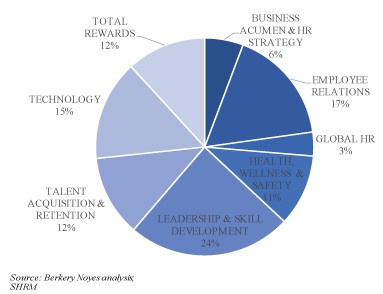2017-06-27 Quick Takeaways from SHRM 2017
- Send To
Share:
We recently had the pleasure of attending the Society for Human Resource Management’s (SHRM) Annual Conference/Exhibition in New Orleans, and left even more excited about the future of the human capital management (HCM) space. While there was no shortage of information to walk away with, here are just a few of our simple observations trying to distill down a very full few days (with the caveat that these aren’t by any means new concepts):
HR is fast becoming one of the most impactful areas for companies
Historically, the C-suite spent a great deal of time on areas like strategy and finance. With good reason, a company without a sound and flexible strategy is going to reach its limits fairly quickly. A company that can’t make money may not last either. However, as these areas have matured over the decades, CEOs are turning to other areas to truly peel back how to maximize business performance. HR is quickly turning into the new frontier. After all, the greatest strategy will not help you if there is no one around to implement it.
This was partly evident from just the sheer number of attendees (over 15,000 so we’ve heard) at this year’s conference. Putting aside the amount of money alone companies are investing to train their HR teams, the emergence of HR technology, big data analytics, and various other sub-industries all dedicated to improving the human capital area speak to HR’s growing impact (the elevation of the Chief Human Resources Officer (CHRO) role is also a clear result of this evolution).
You need only look at Uber’s recent troubles to see how an unchecked culture and lack of employee engagement (and empathy) can lead to company-wide turmoil, increase employee turnover, damage the brand, stifle innovation, and destroy shareholder value.
Workforce composition is moving beyond the traditional
Blended workforces, multi-generational, socially/technologically connected, diverse. The workforce of today is constantly evolving and businesses need to adapt to not only survive, but get the most out of their most important assets.
This has almost countless implications in every area, from the way companies think about compensation to how projects are managed. Millennials are going to be the dominant workforce population soon and companies must understand what motivates them. Feedback cannot be once a year and money may not be the primary driver. Flexible work environments, better communication/collaboration tools, and shorter company tenure will all have a pervasive impact.
HR teams will see their workforces become increasingly diverse, increasingly spread out, and increasingly demanding. Technology can bridge the gap, as evidenced by the numerous point and platform solutions in the market, though we can’t forget technology is still being used by people.
Differentiation for HR solutions is not just a competitive advantage, it’s a competitive necessity
Every day “human capital” seems to broaden its reach. The employee lifecycle spans so many areas, it’s no surprise there were, by our count, roughly 3,500 exhibitors across 600+ companies at the conference this year. SHRM breaks them into 8 major buckets with 69 sub-buckets spanning everything from organizational planning to global relocation to HR systems.
SHRM Exhibitor Breakdown by Major Category (Approximate)

What does that all mean? There are a lot of companies vying for presence in their niches, and the ones that are have clear differentiation will survive in the wide sea of companies. For example, vertical solutions appear to be garnering a bit more interest as well when it comes to smaller companies who can develop more robust positions in specific markets, rather than trying to expend significant resources creating broad, horizontal platforms. It’s an obvious conclusion I suppose, but illustrated to me by the sheer diversity of businesses present and the continued blurring across categories for larger strategic players who are interested in adding on in whitespace.
Certainly, that’s just a brief view, but these trends become even more interesting when you consider the growing M&A activity and investment in the space. Companies entertaining some sort of transaction process should be prepared to consider the impact of these trends on their businesses as the landscape continues to evolve. As advisors, we strive to help companies think about how to best position themselves in the context of these types of factors, reach the right parties, and ultimately drive maximum value.
About Berkery Noyes
Berkery Noyes is an independent investment bank that provides M&A advisory and financial consulting services to middle market companies in the information and technology industries. The firm offers skilled transaction management to publicly traded and privately held businesses and private equity groups in both sell-side and buy-side transactions. Berkery Noyes has managed over 500 transactions, ranging from several million to more than four billion dollars in value.
